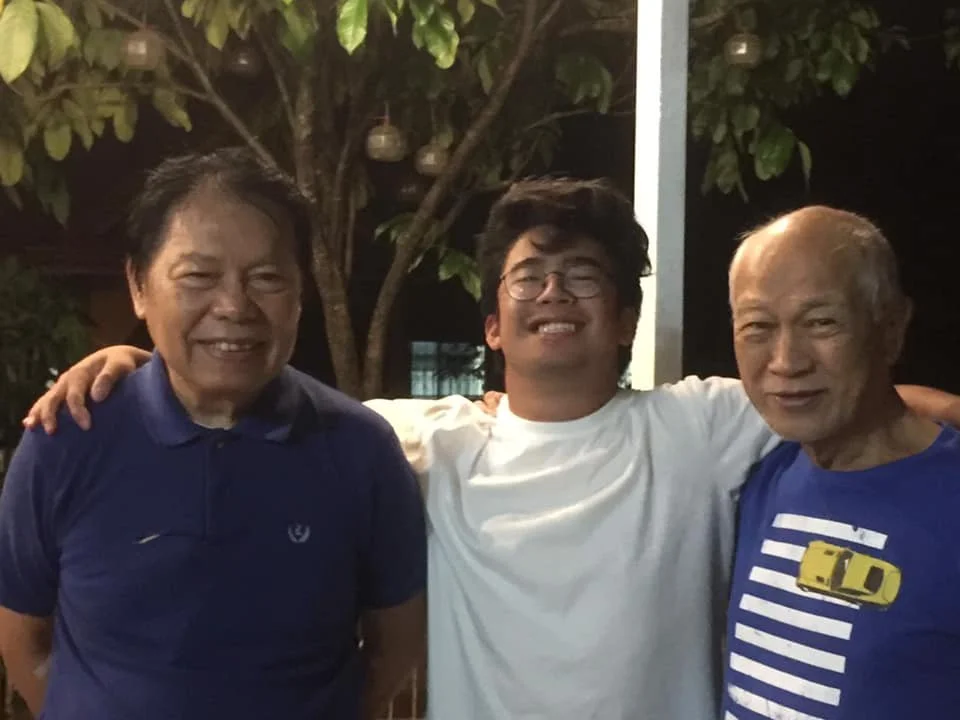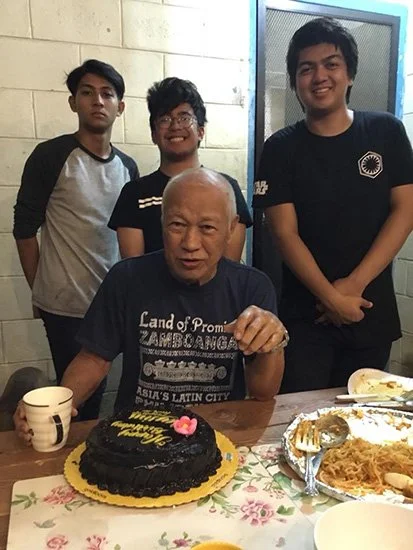Remembrance of Crispy Pork Bellies Past
/The simple dish of deep fried pork belly, popularly known as lechon kawali (although there are variations such as crispy bagnet or lechon macau), is as ubiquitous as the Mang Tomas sauce that pairs with it perfectly. There is no shortage of restaurants offering the dish prepared in various ways, whether as traditional crispy slabs of meat, fat, and skin chopped into bite size pieces, or in more contemporary iterations such as the Sarap Shop’s lechon sisig carbonara.
Lechon kawali made by Miguel Carrion’s dad, Mike Carrion.
There are plenty of reasons to fall in love with lechon. It’s simple, unpretentious, and delicious. As the perfect companion to fluffy and freshly steamed rice, and the soulmate to a bottle of ice cold San Miguel Beer, the dish can do no wrong.
But food is not just sustenance throughout the day, or only something to indulge in during a night out, but it is also a vessel for emotion and communication. For most people, certain foods can evoke a sort of “’Ratatouille’ moment,” referring to the scene in which the Pixar film’s antagonist, a food critic named Anton Ego takes a bite of the dish prepared by the literal rat chef and is transported back to his childhood when his mother would prepare the same dish for him.
Ask me for my top five favorite Filipino dishes and instead I’ll give you five stories. This is the story of my number one favorite, lechon kawali.
For as long as I could remember, I would crave some iteration or preparation of pork at least once a week. Bacon, eggs, and rice; sinigang na baboy (pork sour soup); pork adobo; pork barbecue; etc. But there was one dish to rule them all and it was always my lolo’s (grandpa’s) lechon kawali.
Before my dad and I moved to the United States to reunite with my mom, I was always being looked after by my lolos and my lolas. At the time, my dad did motion graphics for ABS-CBN, so that meant a lot of late nights at the office, especially Fridays when deadlines were abundant and traffic was unbearable. This brought about an arrangement that my lolo, on my dad’s side, would always take me to his house in Antipolo for the weekend.
It was at this house that I remember the first time I ever had lechon kawali.
Going up to Antipolo on the weekends always meant that I would be a sort of king-like child when it came to food. Greenwich pizza, Jollibee Chickenjoy or Chicken McDo, an abundance of “Itnok” instant noodles (a brand which sadly cannot be found here in the States and was once taken from me by a US Customs agent when I was returning from a Philippines trip), and almost any dish I wanted, as long as it was reasonable.
One day, instead of taking a detour for fast food, my lolo went straight to Lores Market, the local palengke or wet market in Antipolo. I only remember two things during that trip to the palengke, the noise and the bag that my lolo carried back with him to the car back home. I told him, “Lolo, gutom na ako” (Grandpa, I’m hungry.)
The writer with both of his lolos during a trip to the Philippines in 2018. (From left to right: Lolo Heni Lopezbaños, Miguel Carrion, Lolo Aloy Carrion.)
I can still see my lolo walking out of that market with the sun beaming, his aviator glasses on, toothpick in his mouth, as if he were a retired action star making his return to the big screen. The enemy being his grandson’s hunger, and his weapon of choice? The pork belly he recently bought.
When we got home, my lola already had the rice cooker ready to be plugged in. My lolo told me to sit down in front of the TV and wait. He boiled the pork belly, with what I assume to be salt, pepper, and bay leaves as that’s how I’ve learned my dad does it. He takes it out, sets it on a plate, and leaves it outside covered with a screen to keep out flies, and he waits.
The key to a proper lechon kawali is to boil the meat beforehand and let it drip dry, a process which takes about two and a half hours, or in child time, an eternity. I remember going outside to stare at the drying slab, wondering why I had to wait for what felt like a lifetime just to eat it. I remember growing impatient, asking if I could just eat some Itnok noodles. “Maghintay ka lang (Just wait),” was all I heard in response. So wait I did.
Eventually my lolo let me know that it was almost time to eat, saying all he had to do was fry the pork belly. It wouldn’t take long since my lolo always went with a thinner cut of pork, the sort that one would use for inihaw na baboy or grilled pork belly. With the oil in the wok ripping hot, he dropped in the pork, and fireworks ensued. The sound of deep frying, reminiscent of pouring rain or maybe firecrackers, acted as an alarm clock, notifying me of the timeframe I had to finish whatever show or infomercial I was watching on TV and sit down at the table, armed and ready with my spoon and fork. The thundering sound of the cleaver against the chopping board was the final countdown, I was finally going to eat.
There it was. In front of me was a plate filled with chopped up, deep fried pork belly. Near my plate of rice was a bottle of Mang Tomas. It was in this house, during that meal, that I first fell in love with lechon kawali.
The writer, Miguel Carrion, with his cousins and their lolo during lolo’s birthday in 2018. (Top row from left to right: Jacob Maglaya, Miguel Carrion, and Patrick Maglaya. Bottom row: Lolo Aloy Carrion)
It’s been many, many years since I last had my lolo’s version of lechon kawali, and it’s been almost three since he passed.
One of my benchmark tests for Filipino restaurants tends to be their lechon kawali, if applicable. I’ve had a lot of lechon, mostly good, rarely bad. Never like my lolo’s.
But one thing’s sure every time I order it, I always somehow end up back in Antipolo.
Miguel Carrion is a Photojournalism student at San Francisco State University whose work has been published in BBC News and Inquirer.net. You can follow his work and contact him through his Instagram: @miguel.flcarrion
More from Miguel Carrion






